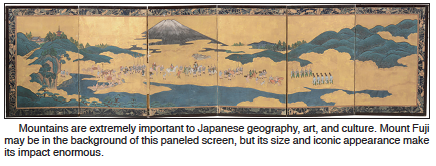Merrick Thread Company is known for rotating displays
Antiques & Collecting
In the old days when clothes
were sewn and mended at home
instead of bought ready-made,
spools of thread were household
essentials. You would see a spool
cabinet in any country store, usually
on the counter. They were
shaped like a miniature chest of
drawers, with lettering on the
front of each drawer, often on a
plaque or window, telling you
the company’s name, the type of
thread and colors of thread stored
in that drawer.
This one is a different stylewhich
may be one reason why it
sold for $1,063 at an auction by
Case Antiques. It is cylindrical,
with a stenciled glass door that
leaves the contents visible. A revolving
case ensures that you can
get a look at everything inside.
When it was filled with spools
of thread, customers’ eyes must
have been drawn to the colors
and motion.
Merrick, the thread company
this cabinet advertises, was
known for this type of display.
Like any company, they wanted
to distinguish themselves from
the competition. And not just
to get customers’ attention: In
1893, Merrick Thread Co. was
sued by Coats, another thread
company that would later merge
with Clarks, becoming J&P
Coats Ltd., which is still producing
thread today. Coats claimed
that Merrick thread spools were
marked with a design too similar
to theirs, creating confusion between
the two companies’ products.
The case was dismissed.
However, considering the patent
date of 1897 on this cabinet, its
unusual design may have been
intended to assert Merrick’s
identity.
* * *
Q: I have a hammered copper
candy dish marked “Gregorian,
Made in U.S.A.” I’ve had it for
69 years. What is it worth today?
A: Gregori Copper was
started in 1946 by P.R. Gregori
and his brother, Fred. At first,
they worked out of their parents’
garage in Capistrano Beach,
Calif. In 1948, they moved into
a building in San Clemente. P.R.
Gregori designed the pieces and
took care of manufacturing while
Fred was the salesman. Pieces
were hand-hammered and finished
with a bluing process. They
were lacquered and baked so the
copper would keep its color. The
company was sold to Sunbelt in
1968 and moved to Albuquerque,
New Mexico, later. Sunbelt
sold the company to a company
in Lemmon, South Dakota, in
1989, and the name became Gregorian
Inc. This company made
wholesale copper and silver jewelry
for at least 20 years. Gregorian
Inc. is now a manufacturer
of farm and ranch equipment,
portable steel buildings and garage
doors. A 5-inch Gregorian
hammered copper candy dish recently
sold for $12 and a 7-inch
candy dish sold for $17.
* * *
Q: I’d like information about
the maker of a plate I bought
at a house sale. It’s decorated
with blue and white flowers and
leaves and is marked “Windsor,
W.R. Midwinter, Porcelon, Burslem,
England.”
A: William Robinson Midwinter
founded his pottery in
Burslem in 1910. It was one of
the largest potteries in England
in the late 1930s. Production
was limited under wartime restrictions
during World War II.
When the restrictions were lifted
in 1952, new lines of dinnerware
with contemporary designs and
shapes were introduced. The
company ran into financial difficulty
and merged with J. &
G. Meakin in 1968. It became
part of the Wedgwood Group
in 1970. Meakin & Midwinter
(Holdings) Ltd. closed in 1987.

